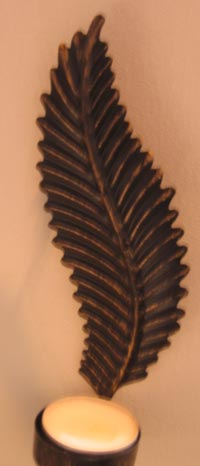Seeing Beautiful Fossils Everywhere
Spotting Objects that Resemble Fossils
One of the drawbacks of working with so much fossil material is that after a while team members at Everything Dinosaur tend to see examples of fossils in everyday objects. We tend to call these “pseudofossils”. The term pseudofossil is used to describe an object that resembles a body or trace fossil when it is not. These misleading structures can be found throughout nature. For example, Everything Dinosaur staff are often shown photographs of paving blocks which the owner claims show a fossil, but these strange patterns in stone are produced by crystals of manganese oxide coming out of solution as water passes through cracks in the rock.
The crystals align themselves in the direction of water flow and often resemble a plant fossil, such as fern in appearance.
We do our best not to leave the bearer of the photograph too dejected, after all, we do point out that the arrangement of the crystals in the stone is unique and there is not another one like it in the whole of the world.
Whilst visiting a trade show, one of the Everything Dinosaur team spotted a delightful tea-light, the fern like appearance of this wall mounted fitting reminded us of the Late Precambrian marine organism Charnia (Charnia masoni)
Tea-Light that Resembles Precambrian Charnia
Picture credit: Everything Dinosaur
Charnia was a deep-sea, organism whose fossils have been found in Late Precambrian strata in Leicestershire, Australia, Canada and Russia. The first fossil of this strange type of primitive animal, perhaps a colonial animal, was identified from a specimen found by a school boy called Roger Mason in Charnwood Forest (Leicestershire). Scientists remain uncertain as to what type of organism the this animal was. It was certainly an animal, as it grew at depths of more than two hundred metres deep, well beyond the depth at which sunlight could penetrate so no photosynthesising plants could exist.
Charnia has bilateral symmetry and is composed of a series of branching, feather-like fronds. It seems to have been benthic (living on the sea floor), held in place by a disc-like, holdfast mechanism. It has been suggested that this animal may have been ancestral to modern sea pens, but the exact phylogenetic relationship between this 550-million-year-old organism and modern phylum remains hotly debated.
One thing that is now known and agreed upon by most palaeontologists, Charnia-like organisms may have been relatively common in the deep-water environments of Late Precambrian seas.
To read an article, related to Sir David Attenborough and the relative abundance of Charnia specimens now being revealed: Spotlight on Fossil Discoveries from Leicestershire (Happy Birthday Sir David).
Seeing the shape and colouration of the tea-light reminded us of the story of Charnia and of how much we have to learn about the origins of life on Earth.
For models and replicas of prehistoric animals: CollectA Age of Dinosaurs Popular Range.


